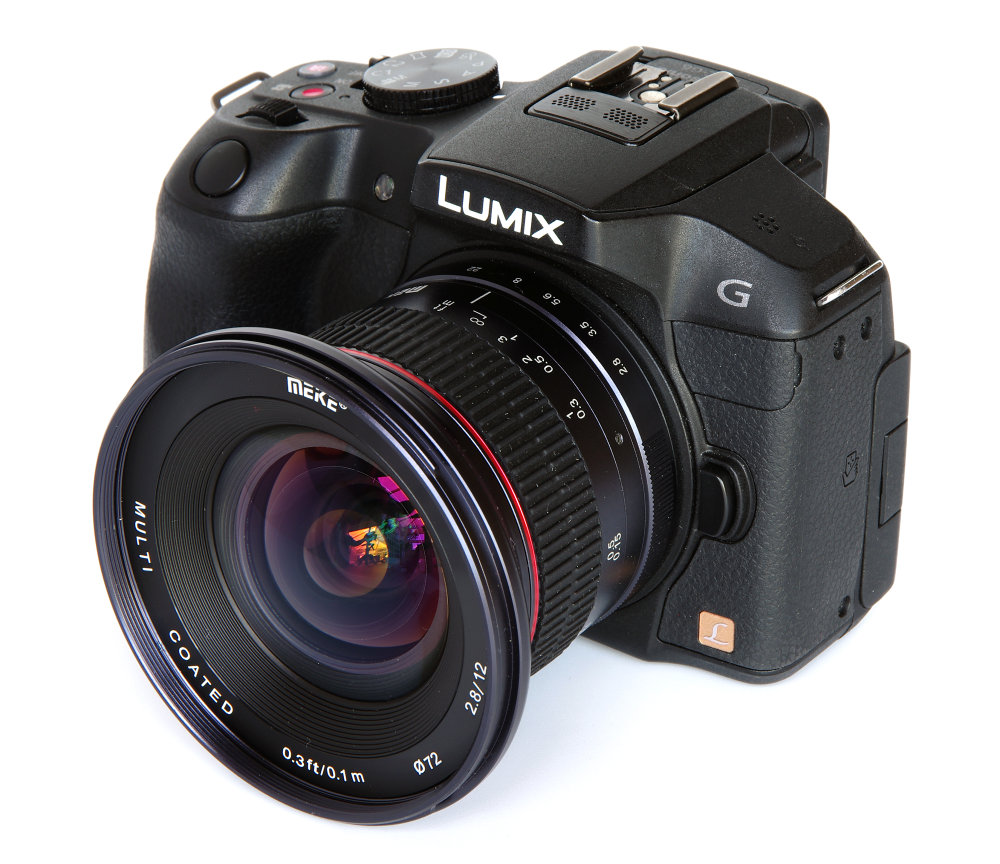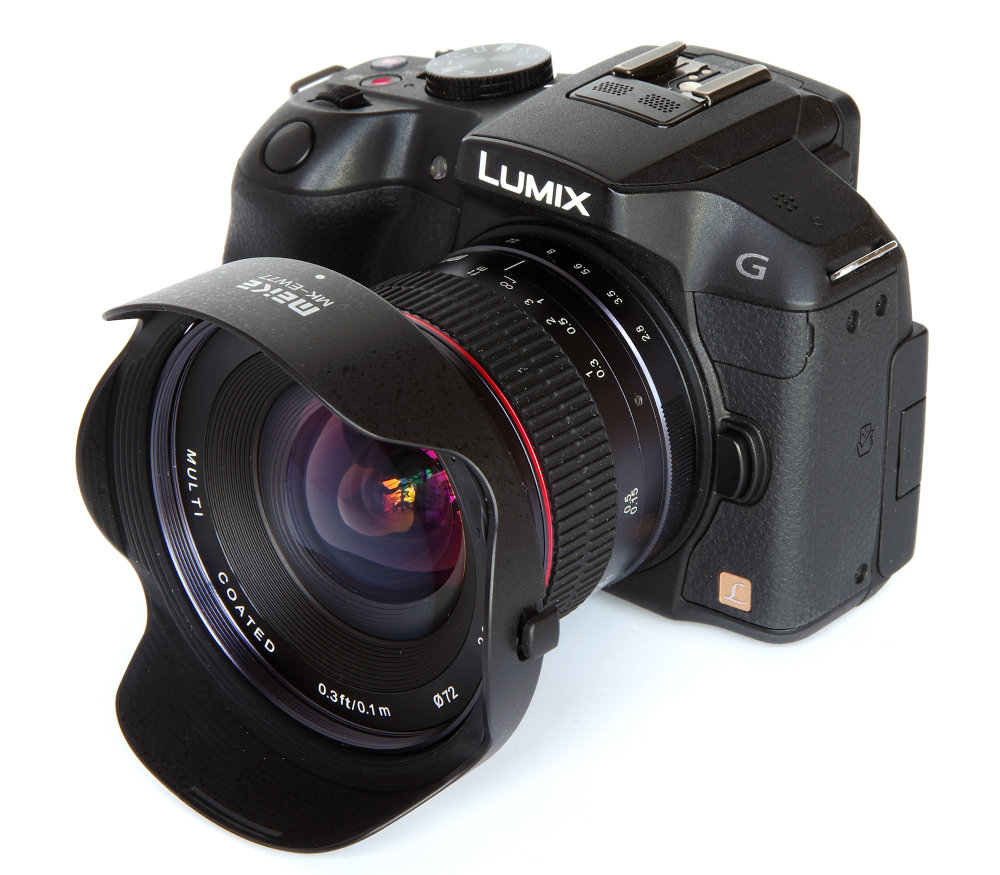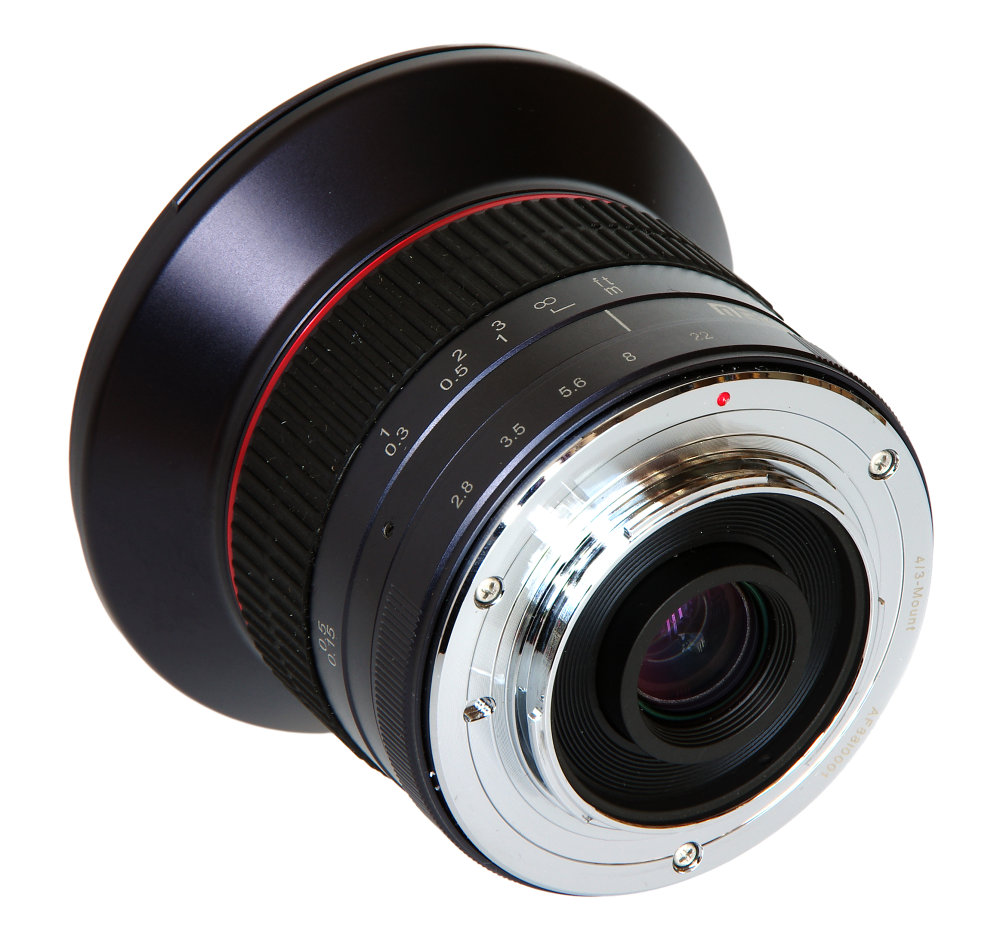Meike 12mm f/2.8 Review
Meike 12mm f/2.8 Handling and Features
A well engineered, metal bodied construction gives a good impression of the lens from the start. At 380g, it is solid but not unduly heavy in use. The front element is well protected by the well-made bayonet lens hood. The hood has a securing catch so it does not become rotated or detached during use. There is a 72mm filter thread.
Immediately behind the lens front is the wide, comfortable focusing ring. The lens does extend when focusing down to its near point of 0.1m (0.3 feet or 3.94 inches) but with such a wide angle the actual extension is very small. The actual magnification is not quoted, but for this type of lens that is very close focusing.
Closest to the camera body lies the aperture ring, with an unusual progression of apertures from f/2.8 to f/3.5 rather than the expected f/4 and from f/8 to f/22, missing out f/11 and f/16. There is, however, a detente between the latter two that seems to be around f/11. All the provided click stops are smooth in operation.
The optical construction is 12 elements in 10 groups, with Nano-technology multi-layer coatings. The diaphragm has 9 blades and the lens maker stresses that this offers superior bokeh effects.
The lens is designed for CSC cameras, either MFT or APS-C formats. This offers “35mm equivalents” of 24mm or 18mm respectively. The version here is an MFT version, with a well engineered and precise mount.
The lens generally handles very well, with the exception of ease of focus at close distances. The depth of field available is such that at longer ranges a distance setting can be set that effectively means no further focusing is necessary for every shot. Closer up, the ability to focus very close is both an advantage and a bit of a nightmare. When it's right, the close focus is brilliant, enabling a new perspective to be seen with many subjects. However, using the camera screen on the G6, or the EVF, is well nigh impossible. The point of focus is beyond the resolution of the screen. There is too much depth of field to see a clearly defined point of focus.
There is usually a practical solution, and in this case setting a distance and then moving the camera to several positions around that distance resulted in satisfactory focus in at least one shot. This will obviously depend on the individual camera designs and what manual focus aids are available, but overall it seems much more difficult than using an optical viewfinder designed for manual focus.
A final point is that there is no depth of field scale provided, which could well be useful.
Add your message
Please login here or if you've not registered, you can register here. Registering is safe, quick and free.
photodo Stats
428 MTF tests
74 in-depth photodo reviews
100+ users join each day
Help the lens community by reviewing or rating a lens today via our lens search
Latest Lens Reviews
- Chinon 28mm f/2.8 Vintage Lens Review
- Canon EF 70-200mm f/4L IS II USM Lens Review
- Samyang AF 85mm f/1.4 EF Review
- Sigma 70mm f/2.8 DG Macro Art Review
- Samyang AF 24mm f/2.8 FE Review
- Meike 50mm f/1.7 Review
- Tamron 70-210mm f/4 Di VC USD Review
- Lensbaby Burnside 35mm f/2.8 Review
- Asahi Super Takumar 50mm f/1.4 Review
- Asahi Super-Multi-Coated Takumar 135mm f/3.5 Review



